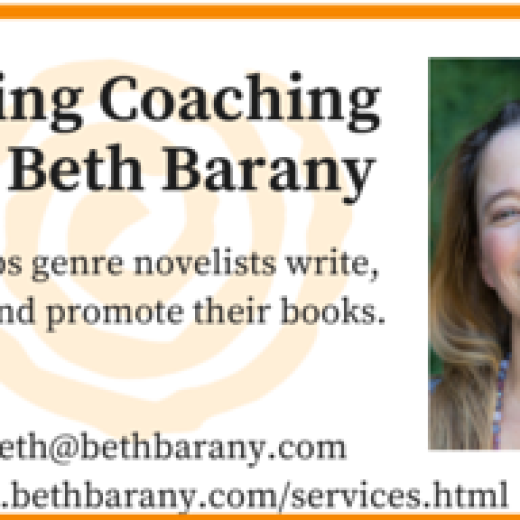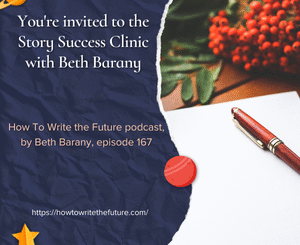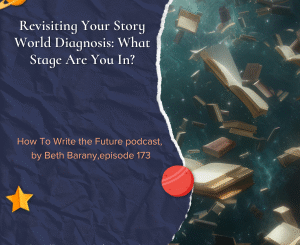Should versus What? The Risk of Living a Creative Life
 We are social creatures and learn how to be so by copying our parents and then later our peers.
We are social creatures and learn how to be so by copying our parents and then later our peers.
Over the years, and actually starting quite young, we develop a sense of the “rules” of our family culture, then our wider culture.
All the should and the should-nots.
If you follow the rules, you get rewarded — praise, then grades, then later, they say, an income and a steady job.
If you don’t follow the rules, you get punished, or worse, shamed and denigrated, and threatened with expulsion from the group.
But what if what you want to do isn’t supported by the group “should”?
What if you want to walk the unbeaten path, the riskier route? What if you want to color outside the lines?
Who is there to guide you?
No one.
Except other independent types. But they’re all walking their own paths.
No one can walk your path. It’s yours alone.
Yet the price is high, right?
We’re programmed from early days to do what’s safe and expected and done. And we’re told it’s bad or wrong or unsafe to stray.
As an artist, though, what is there to do if your instincts pull you far away from what’s expected, from all the “shoulds,” away from the group think?
To be an artist, we must step away from the norm to be able to see it for what it is: a collection of rules past generations used to navigate their world.
But your world is no longer the world of your parents and ancestors. Mine neither.
It’s scary to dare to do something different, but what if you can’t help it? What if that’s just the way you’re wired?
The challenge for me, and I see this in my students and clients, is to have the courage to see the “shoulds” for what they are — hand-me-downs from the past — and to evaluate what really works for us now, today.
One of the ways I uncover what I think versus what has been handed down to me is I notice what I’m saying to myself, especially noting if I use the word “should.”
I notice how using “should” makes me feel. Often I feel unhappy. I feel as if I’m in a cage, as if I have limited options. I’m tentative and say to myself, “Oh no, I couldn’t do that.” Or, “I shouldn’t do that.”
Another internal voice whispers, “Why not?” and I have no good reply.
I just feel small and scared, like a mouse stuck in its safe home because a big scary cat is out there, waiting for me to leave my home. If I do, it will pounce on me.
These are all clues to me that I’m in a “should” box.
When I notice this, I do a few things.
First, I breathe in and out compassion — for myself and the situation that provoked the “shoulds.”
Then I recognize that it’s normal to be here, locked in by the unconscious programming from my past that has helped keep me safe, as it did my ancestors.
So, I bless my ancestors and recognize that they chose their fate.
Now I have an opportunity to choose my fate, and at each step of the way.
Next, I ask myself What would I like? and I sit in the empty nothingness before the answer arises.
It could be a long time before the answer comes, so it’s best to get comfortable with the discomfort of not knowing.
There’s a lot of not knowing as an artist. And that’s okay.
The quicker you become comfortable with this discomfort, the quicker you can sink deeper into the compost of creative gestation.
Stuff is happening. You just can’t see it because it’s happening in the dark.
The next thing I do after sitting in the dark nothingness is I take action, whatever action I can, in the smallest steps I can, toward my big dream.
In my case, my recurring big dream is to be a writer. So, I write. I write anything and everything in my journal and work on whatever project I deem important.
- I can write articles. Great, write for 10 minutes.
- I can edit my novel. Great, I can do that for 20 minutes.
- I’m dabbling on a TV script. Great, I can play with that for 15 minutes.
Does it mean my work is perfect and matches some external factor of success?
No, it doesn’t. The big picture of being a Writer who is well-regarded, sells well, and is read widely is important to me.
I’d love all those things. But I can’t control any of them.
All I can control is today’s writing, today’s steps.
It’s a relief actually, to only focus on today.
Like stringing together a long necklace, I know that today’s actions will feed into the rest, and at some point, I’ll have another complete body of work to reveal to the world.
YOUR TURN: A RECAP
1. Notice when you’re in a “should” cage.
2. Choose anew. What would you like? And sit in the uncertainty until a clear answer develops. Maybe quickly, maybe not.
3. Take small do-able actions that aren’t grandiose but are simple, satisfying, mundane, and the real work of being a creative.
Comment and let me know what you discovered or uncovered in this exercise in noticing your “shoulds” and what else could be.
Here’s this article in audio:
More of my audios on Soundcloud. Download, subscribe, or follow. Thanks!
♥
All my best,
Beth
PS. I was recently interviewed for a free summit on creativity and entrepreneurship that will broadcast in December, just in time for the holidays and the turning of the year. I had a wonderful time chatting about creativity, structure, and starting anew. You can sign up for the upcoming summit here.
***
News from Barany School of Fiction
For those of you in the self-paced Plan Your Novel course, I’ve updated the new lesson on “Character Relationship Map,” taking out the bad overview video and replacing it with a nice clean one. 🙂
You may need to log in again; alternatively, you can access this course by logging into the school and clicking on “My Courses.” Or, if you don’t have this course, you can purchase it here.
The 4 Stages of Writing A Novel
Not sure what stage you’re in? Take this short quiz here.
Coming Soon
We’ll be teaching live our Edit Your Novel course this coming January 2018, a special 3-month intensive, specifically designed for genre fiction writers.
To learn more and get on the waiting list, go here.
Questions?
Not sure which program or course is right for you?
Contact Beth for a complimentary short chat.
BTW, I’m a working novelist too, with two series published in two genres, and more on the way. 🙂
***
ABOUT BETH BARANY
 Beth Barany is creativity coach for writers, a teacher, workshop facilitator, and speaker, helping writers address overwhelm and confusion so that they can write, market, and publish their fiction. And make it fun!
Beth Barany is creativity coach for writers, a teacher, workshop facilitator, and speaker, helping writers address overwhelm and confusion so that they can write, market, and publish their fiction. And make it fun!
Owner of the Barany School of Fiction, an online training hub, Beth takes great interest in how humans learn, create, and grow, and includes all her students’ life experiences, including the ancestors, into the moment.
Want to plan your novel, but not sure how? Check out the comprehensive Plan Your Novel course here.
She also writes magical tales of romance and adventure to empower women and girls to jump into life with both feet and be the heroes in their own lives.
Check out her Henrietta series here (YA Fantasy) and her Touchstone series here (Fantasy/Paranormal Romance).
Support her mission to empower women and girls with her fiction on Patreon here.
Read her latest book for writers, Twitter for Authors, here.
The Writer’s Fun Zone blog is a service of Beth Barany’s coaching and consulting business, helping genre fiction writers write, market, and publish their books through live and home study courses, a 12-month group program, and private consultations.
You may share this content intact and with no changes with this attribution:








Your post reminds me of a JD Salinger quote I am fond of:
“One day, a long time from now you’ll cease to care anymore whom you please or what anybody has to say about you. That’s when you’ll finally produce the work you’re capable of.”
Thanks for the reminder to all of us to live our artist lives for ourselves and not for the expectations of others.
What a wonderful quote, Hugh! Thanks for sharing it. And what if that one day was today? 🙂
You’re so welcome! I know it’s not a easy road to walk, but I think it’s where our true power as artists lies.